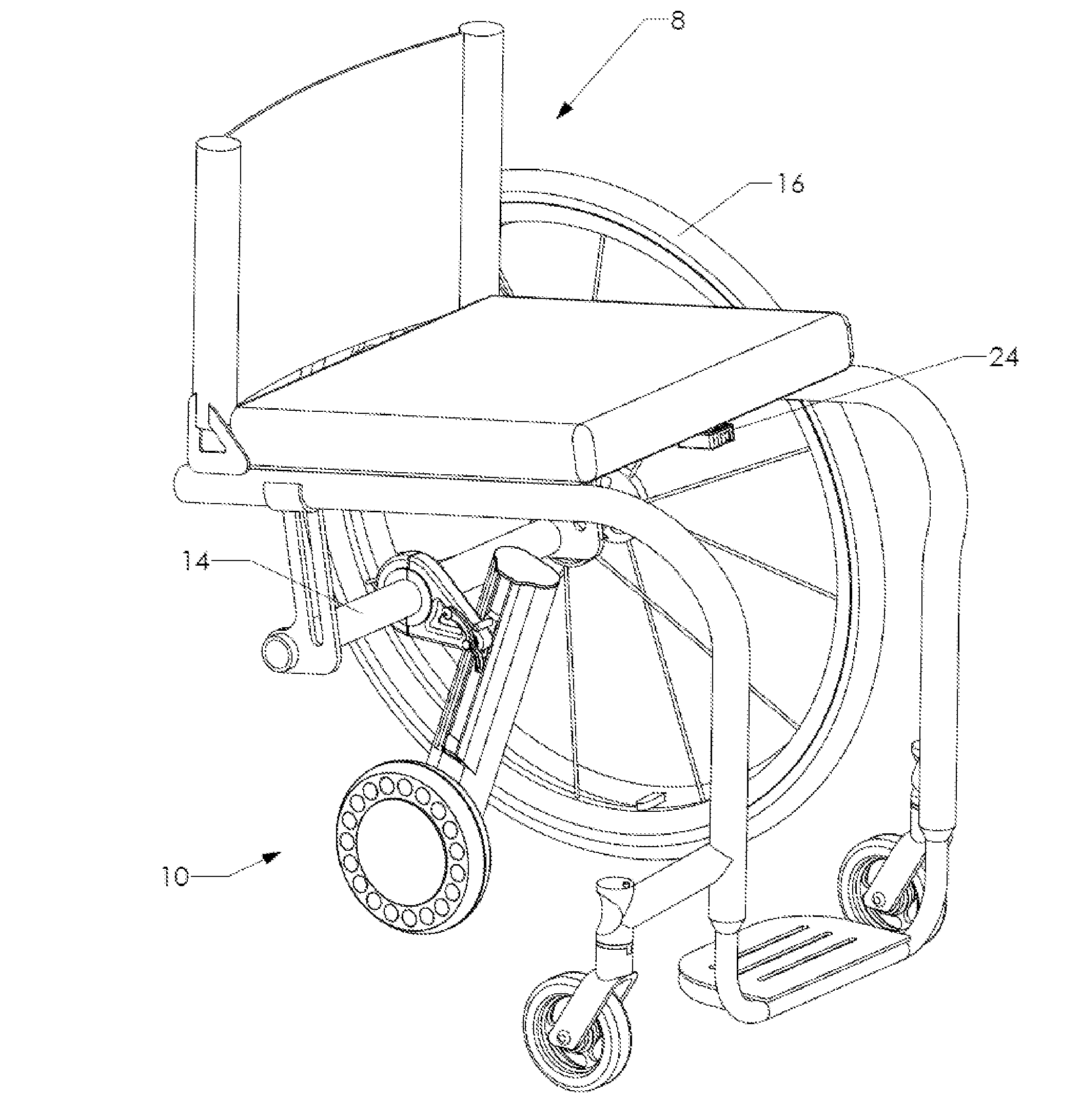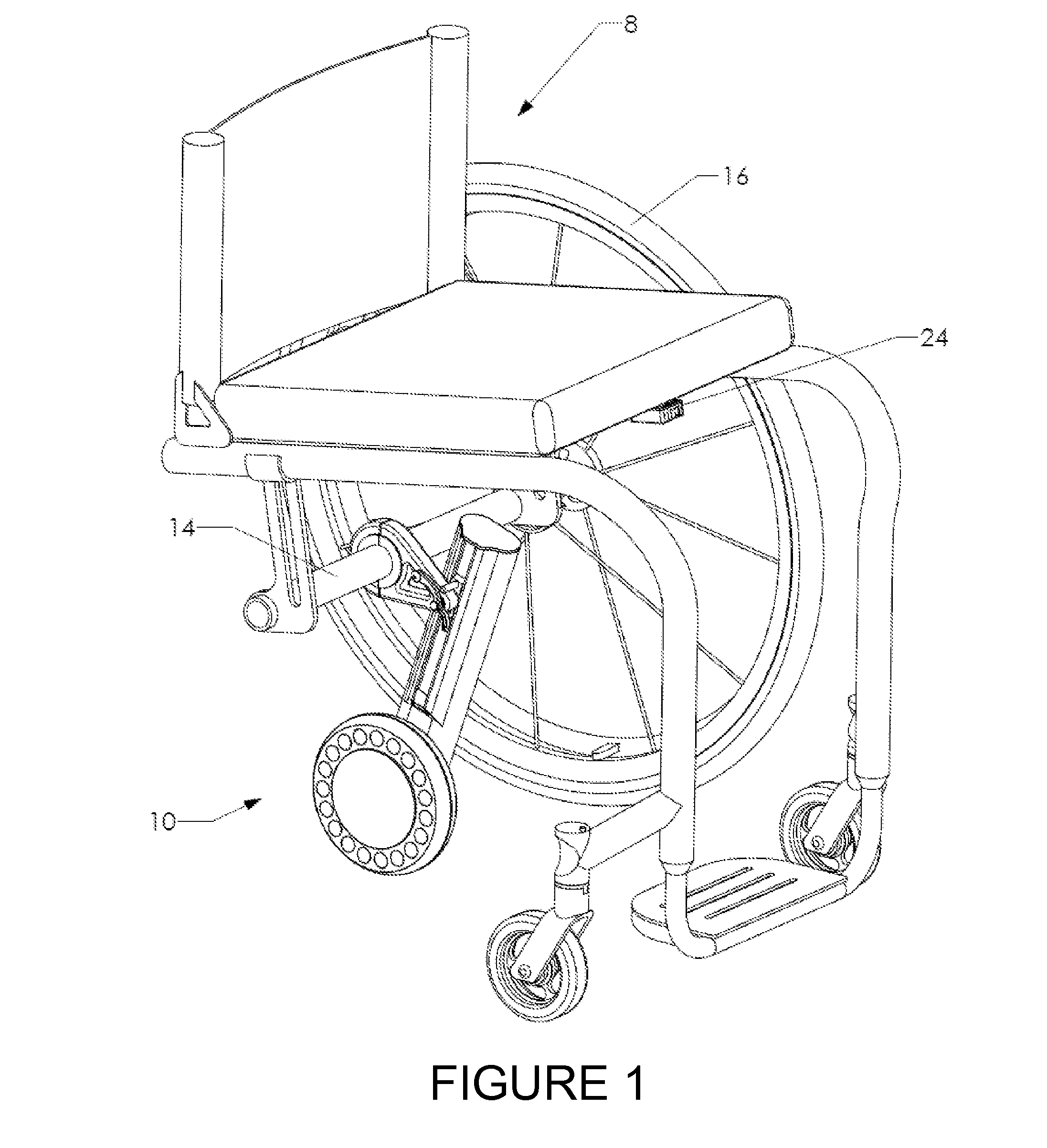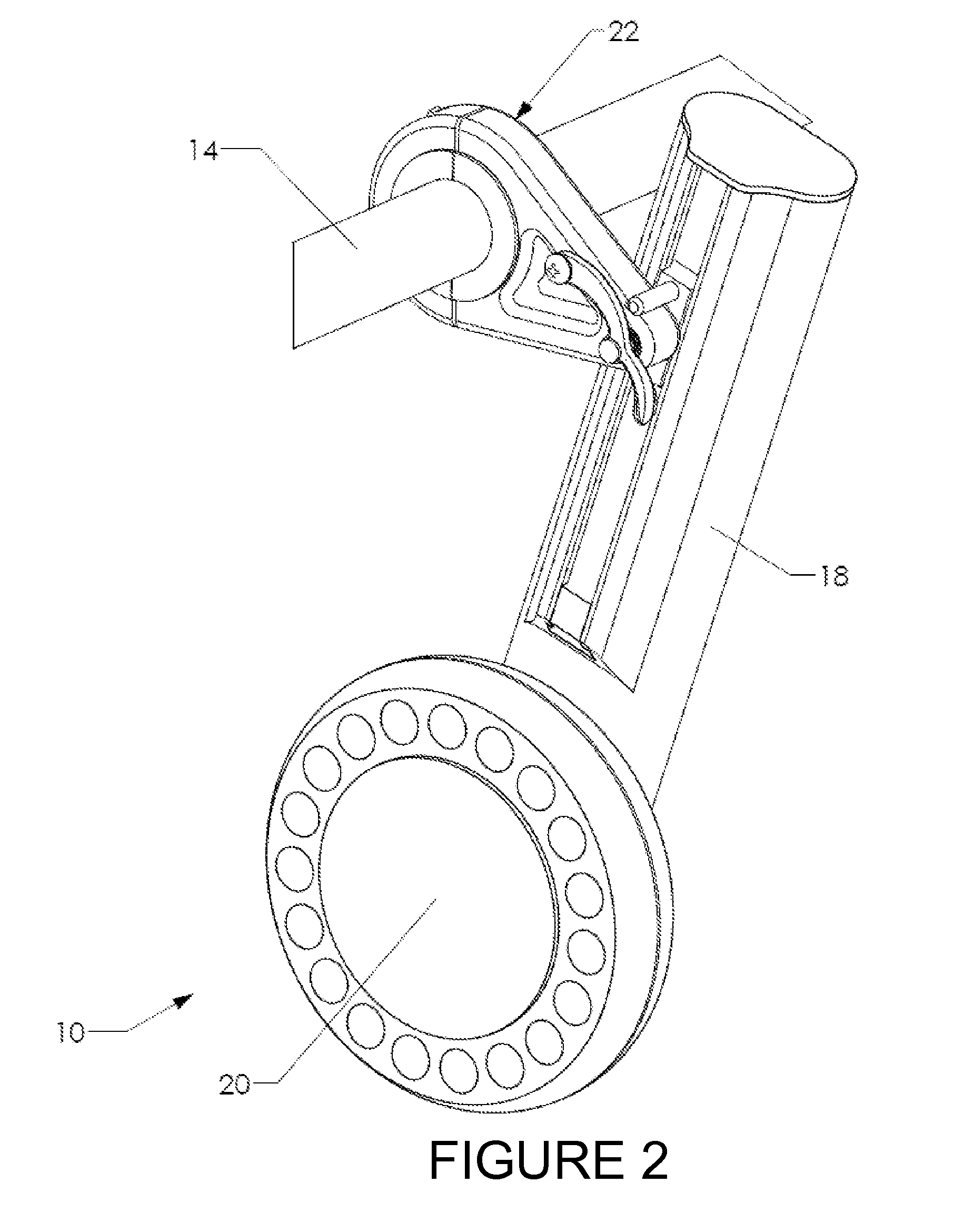Motion-based power assist system for wheelchairs
a technology of power assist system and manual wheelchair, which is applied in the direction of dynamo-electric converter control, instruments, tractors, etc., can solve the problems of difficult to get the wheelchair into and out of the car for even the strongest user, add and also affect the battery life. , to achieve the effect of easy transportation and significant weight to the wheelchair
- Summary
- Abstract
- Description
- Claims
- Application Information
AI Technical Summary
Benefits of technology
Problems solved by technology
Method used
Image
Examples
Embodiment Construction
[0019]In various exemplary embodiments, the present invention comprises a power assist system used on a manual wheelchair. Motion-based instrumentation measures the kinematics of the power assist system. The kinematics measured include, but are not limited to, linear velocities, angular velocities, linear accelerations, and angular accelerations. These parameters are quantified using a range of instruments, including but not limited to, gyroscopes, encoders, potentiometers, inertia measuring units, and multi-axis accelerometers. From these motion-based measurements, push activation can be recognized.
[0020]The push activation recognition employs the principle that when the user is applying a push to the rim mounted handrim of typical wheelchair rear wheels 16 on a generic manual wheelchair 8, as shown in FIG. 1, the wheelchair rear wheels 16 are being accelerated by the user. If the rear wheels 16 are experiencing an angular acceleration then the wheelchair 8 and all onboard parts wi...
PUM
 Login to View More
Login to View More Abstract
Description
Claims
Application Information
 Login to View More
Login to View More - R&D
- Intellectual Property
- Life Sciences
- Materials
- Tech Scout
- Unparalleled Data Quality
- Higher Quality Content
- 60% Fewer Hallucinations
Browse by: Latest US Patents, China's latest patents, Technical Efficacy Thesaurus, Application Domain, Technology Topic, Popular Technical Reports.
© 2025 PatSnap. All rights reserved.Legal|Privacy policy|Modern Slavery Act Transparency Statement|Sitemap|About US| Contact US: help@patsnap.com



